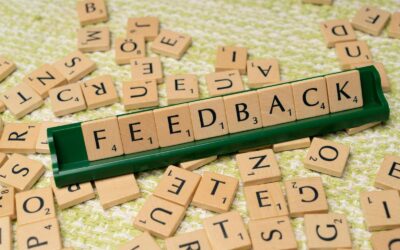Have you ever felt like you’re constantly losing your best talent to competitors? It’s a common struggle for many businesses.
It can be challenging when your top performers slip away without warning, leaving you with subpar output. Lack of direction or advancement can also make employees feel stagnant, leading to disengagement and decreased productivity.
Ultimately, this can result in workflow disruptions and incurring significant costs in recruiting and training new hires.
In today’s landscape, nurturing talent isn’t just about attracting the best people — it’s about keeping them engaged and growing within your organization.
That’s where a great employee development plan comes in.
By implementing a comprehensive employee development plan, you give your team the tools they need to thrive.
Clear goals, exciting skill-building opportunities, and a roadmap for career advancement — it’s all there. When your team feels supported and challenged, the sky’s the limit for your business.
Let’s find out how to get your crew on the fast track to success!
What is an Employee Development Plan?
An employee development plan, also known as employee growth plan, is a strategic roadmap that helps employees grow and advance within their company.
It outlines the goals, skills, and competencies an employee needs to develop to succeed in their role and advance in their career.
Unlike traditional performance reviews that focus on past achievements, a development plan focuses on the employee’s future potential.
It’s a way to help your employees grow their skills, knowledge, and abilities by providing personalized opportunities for learning and development.
An effective development plan includes:
Goal-Setting
This is where you set specific, measurable goals that align their aspirations with your organization’s objectives. This helps them stay focused and move in a clear direction.
Skills Assessment
Evaluate the skills and competencies to know where an employee is strong and where they need to improve. Based on this, you decide what to learn next.
Personalized Learning Path
This refers to targeted training, mentorship, and experiences recommended to help close skill gaps and support professional growth. The approach is customized to fit your employee’s unique needs and learning styles.
Regular Check-Ins
Progress is tracked through ongoing collaboration with managers. This will allow for adjustments to be made to plans as needed.
A strategic employee development plan benefits both employees and employers:
- Employees gain clarity on growth opportunities, feel valued through investment in their success, and build capabilities to advance their careers.
- Organizations improve employee retention, boost engagement and productivity, and build their talent pipeline by developing motivated, high-performing team members.
Benefits of an Employee Development Plan
An effective employee development plan provides numerous benefits for both employees and the organization. Some of the key benefits include:
Increased Employee Engagement and Job Satisfaction
Businesses can make their employees happier and more engaged by implementing a solid employee development plan. When employees feel invested in and supported, they are more engaged with their work.
Why? It’s because they know that the organization is committed to their growth and success.
Furthermore, offering opportunities for skill development, additional responsibilities, and progress toward their career goals leads to higher job satisfaction among employees.
80% of workers say that having a chance to learn new skills would considerably improve their engagement levels.
Improved Productivity and Performance
By providing development opportunities to your employees, you’re not only helping them build their skills but also boosting productivity and performance within your company.
Research indicates that 59% of employees believe that training is a crucial factor in improving their overall job performance.
When employees gain new skills and knowledge, they can perform better in their roles, take on more responsibilities, and contribute more effectively to your company’s success.
Better Talent Retention
Investing in an employee development plan fosters growth and improves talent retention. According to Zavvy, 93% of employees want to stay with a company that invests in their career development.
By showing that you care about your employees’ futures, you build loyalty among the best performers who see themselves working at your company for a long time.
Plus, when you support your team members’ professional growth, they’re less likely to look for new job opportunities elsewhere.
They’ll be motivated to stay with you and work hard to get promoted and keep learning new things.
Since replacing an employee can cost 6 to 9 months’ worth of their average salary, effective talent retention saves companies substantial resources in the long run.
Key Elements of a Successful Growth Plan
When creating an effective employee development plan to help employees grow, you must ensure it covers all the important bases. Some essential elements to include are:
Mentorship and Coaching
Connecting employees with mentors and coaches can be a great way to facilitate skill-building and career advancement.
When you pair up newer employees with more experienced ones, they can learn a lot and get guidance.
Coaches can also provide unbiased support and advice to help team members identify growth areas and work towards professional goals.
Continuous Learning Opportunities
Continuous learning and upskilling opportunities are more crucial than ever.
Whether attending workshops, listening to speaker series, taking online courses, or more, the key is to maintain a mix of hard and soft skills training to build competencies.
While technical abilities are important, don’t forget to prioritize skills like communication, leadership, and collaboration.
Encouraging job rotations and cross-functional assignments can also give employees new perspectives, responsibilities, and challenges that can help them grow and develop.
Regular Feedback
Frequent and constructive feedback fuels growth. Employees need insight into their performance and progress to stay motivated.
That’s why managers should provide constructive feedback regularly, not just during annual reviews. Peer feedback can also help them get a more objective view of their performance.
And of course, the feedback loop goes both ways. As an employer, it’s important to ask for employee feedback, too.
Are there any pain points or blockers they’re experiencing? Their input can shed light on potential improvements.
Designing Your Employee Development Plan
Crafting an effective employee development plan requires assessing needs, setting goals, and tracking progress. Here are some best practices for designing a plan that delivers results:
- Assess Individual and Organizational Needs
The first step is conducting a thorough needs assessment. Start by gathering feedback from your employees.
What skills they’d like to develop? What are they good at? What do they need help with?
Then, take a look at your organizational needs. Try to figure out what’s missing and what you can do to bridge the gap between what your employees can do now and what you need them to be able to do.
- Set SMART Goals
Once you have the assessment data, work with your team to set SMART goals that align with individual and organizational objectives.
SMART stands for Specific, Measurable, Achievable, Relevant, and Time-Bound. This way, everyone knows what they need to work on and when.
Having well-defined goals helps everyone stay focused and work towards the same objectives.
- Choose Development Activities
Choose development activities that support SMART goals, like training programs, stretch assignments, job shadowing, and mentoring.
Some employees may prefer hands-on experiences, while others may prefer more structured training programs.
This is why you should offer different activities to cater to different learning styles and create a personalized plan for each employee based on their strengths, weaknesses, and career aspirations.
This will help your employees grow and develop in a way that benefits both them and your organization.
- Track Progress
Make sure to keep track of progress regularly. There are tools like performance reviews, surveys, self-assessments, and continuous feedback channels that can help you figure out what’s working and what needs improvement.
It’s important to keep communication open between employees and managers.
- Adjust the Plan Accordingly
View the employee development plan as a living document that evolves over time. As goals are achieved and needs change, adjust the plan accordingly.
By doing so, you can ensure that it remains effective and keeps helping your employees move forward.
Taking a structured approach allows you to design employee development plans that genuinely build capabilities and boost performance. Employees also appreciate the transparency and guidance in reaching their career goals.
Employee Development Plan Template
A good employee development plan template sets professional goals and outlines specific actions to achieve them. Here’s a sample template you can customize:
| Employee Development Plan | |
| Employee Name | |
| Position Title | |
| Department | |
| Manager | |
| Professional Goals | [List 3-5 development goals for the upcoming 6-12 months. Include a timeframe for achieving each goal.] |
| Development Actions | [Identify 2-3 action items required to accomplish the goal. Set target dates for completing each action item.] |
| Development Support Needed | [Specify any training, mentoring, or other support required to achieve goals. Identify who will provide this development support.] |
| Progress Update Schedule | [Set dates for periodic progress reviews with the manager.] |
| Signatures | [Insert: Employee Signature, Manager Signature, and the Date] |
Overcoming Common Challenges
When you’re trying to implement an effective employee growth plan, it’s easy to hit a few bumps in the road.
It’s important to know what these obstacles are so you can plan ahead and overcome them. That way, you can keep moving forward and get the results you’re looking for.
Budget Constraints
One of the most common challenges is the limited budget and resources allocated for employee learning and development initiatives.
With so many other things vying for attention, companies might be hesitant to spend a lot on these programs.
But let’s not forget the significant long-term benefits that come with investing in employee development, such as improved retention, productivity, and promotion rates.
What to Do: To work within budget limitations, you can leverage free or low-priced online platforms for learning. You can also encourage your staff to mentor each other and learn new things together.
Another option is to look for local programs or partnerships that offer discounts on training.
Getting creative with cost-effective resources can often yield high returns on investment.
Resistance to Change
Have you ever faced resistance from long-term employees when introducing new development frameworks?
It’s a common obstacle that many organizations face. These employees have grown accustomed to the previous policies and may be hesitant to embrace change.
What to Do: Making sure that everyone understands the program’s purpose and benefits is crucial for getting everyone on board.
Set clear expectations about what’s expected from everyone and when they need to get involved.
You can involve your top team members in designing the program so they feel responsible for its success.
More importantly, be open to feedback from your staff and make changes to the plan to make sure it works well for everyone.
Lack of Clear Metrics
Measuring the impact of employee development can be challenging without well-defined metrics and follow-through. It’s not easy to collect the right data and analyze how things are going over time.
What to Do: Establish quantitative metrics like employee retention, internal promotion rates, and performance scores, as well as qualitative feedback through surveys and interviews.
Maintain organized records and schedule regular check-ins to gauge progress.
Remember that development is a continuous process, not a one-time thing, so you can keep getting better and better.
With some good planning and effort, you can create a great employee growth plan that benefits everyone in the company.
Measuring the Impact of Your Employee Development Plan
It’s crucial to track progress and measure the outcomes of development plans using both qualitative and quantitative metrics. This way, you can see what’s working and what’s not, and keep making things better all the time.
Here are some suggested tools and techniques for measuring impact:
Employee Surveys
Make sure to ask your employees for their feedback before and after you implement the development plan. Ask questions about job satisfaction, career goals, and perceived growth opportunities.
Performance Data Analysis
Track measurable performance metrics like productivity, sales, quality ratings, and project success rates. Compare data before and after the development plan is in place.
Benchmarking
Benchmark employee satisfaction, retention, and promotion rates against industry standards. This provides a baseline for comparison.
Qualitative Feedback
Gather direct feedback from employees and managers through methods like one-on-one meetings, focus groups, and anonymous suggestion boxes.
Goal Tracking
Set specific, measurable goals for each employee as part of the development plan. Regularly track progress toward these goals.
360-Degree Reviews
Incorporate feedback from an employee’s managers, peers, direct reports, and other stakeholders into performance reviews.
It’s important to keep tabs on how well your employee growth plan is working out.
By regularly analyzing both the numbers and feedback from your team, you can figure out which parts of the plan are hitting the mark and which areas could use some work.
Keep your plan up-to-date and ensure it’s meeting the ever-changing needs of your company.
Key Takeaway
An effective employee development plan is essential for boosting retention, engagement, and productivity.
It helps employees progress their skills and careers, and take ownership of their professional growth.
To make it personalized and dynamic, assess individual interests, track progress, and adjust the plan as needed.
When done right, these employee growth plans cultivate talent and skills from within your existing workforce. Employees feel acknowledged and supported.
And for companies, this pays dividends in the form of happier, more loyal, and more productive teams, resulting in lower turnover costs and better outcomes.
Want to learn more about increasing employee happiness through development plans and other perks?
We have built our own “Employee Benefits and Perks Report” that helps you to build a robust employee benefits program and get the most out of your benefits budget.
Download our comprehensive report here!




